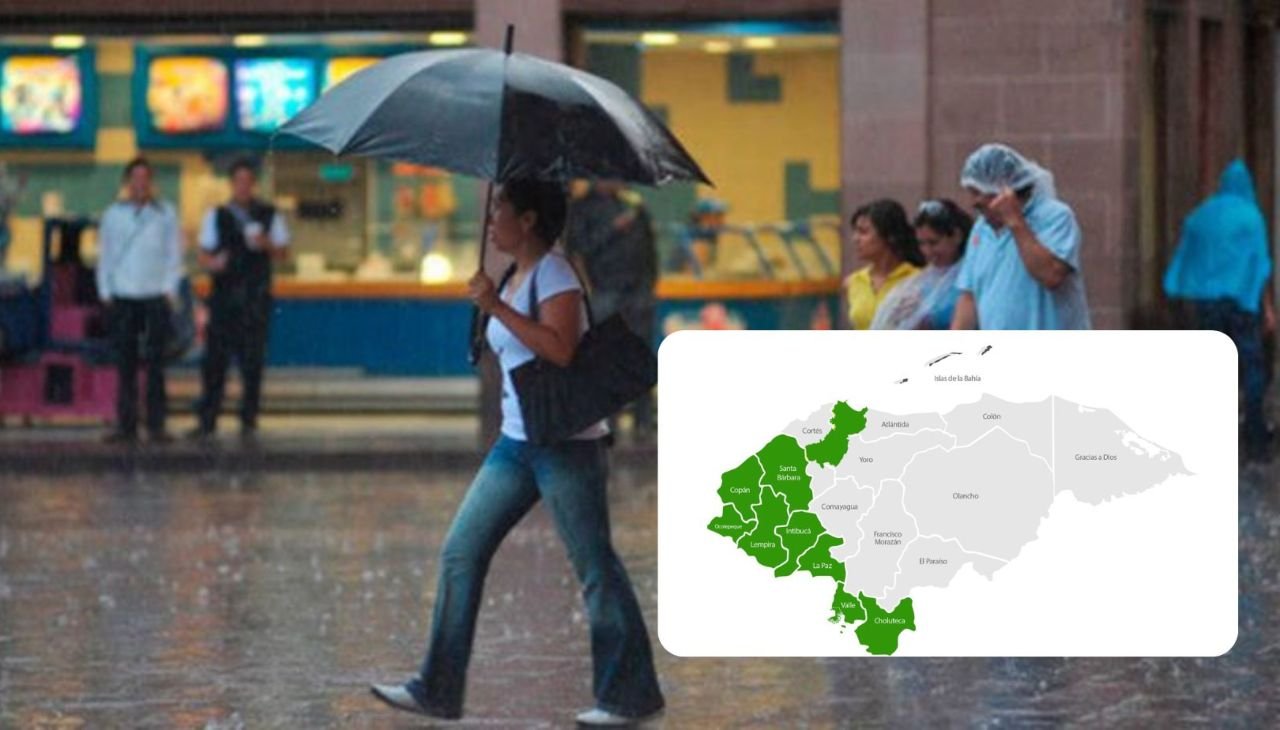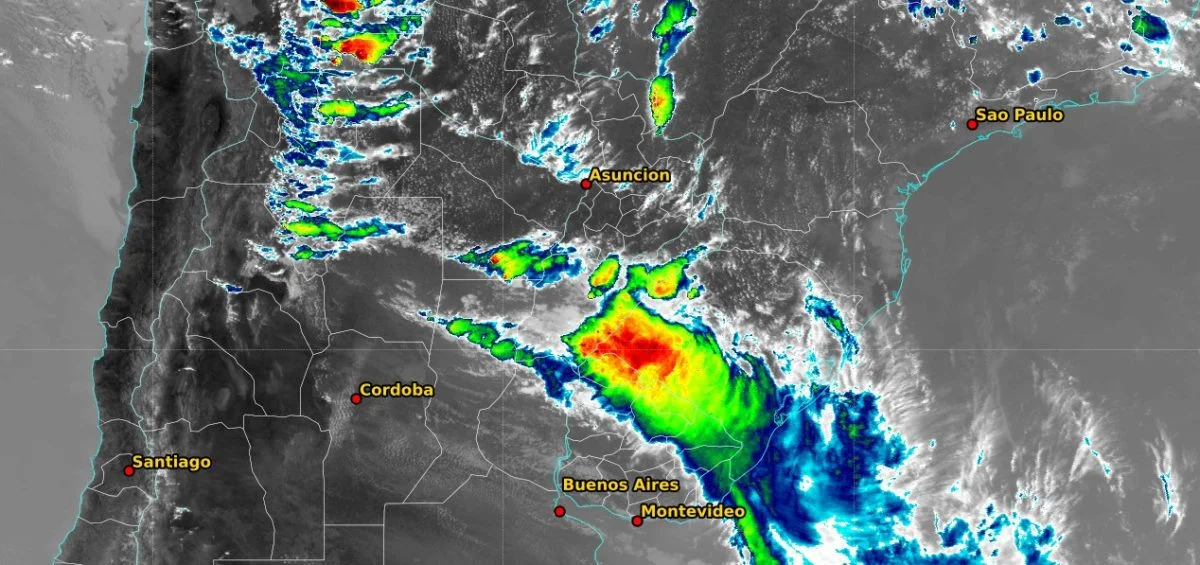Weather
Clima para Mañana: A Comprehensive Guide
Published
1 year agoon
By
Jack
Clima para Mañana: Weather forecasts play a crucial role in our daily lives, helping us plan our activities and make informed decisions. Understanding the science behind weather predictions and knowing how to interpret weather symbols are essential skills for anyone who wants to stay ahead of the game. In this comprehensive guide, we will explore the intricacies of weather forecasting, the tools used to predict weather conditions, various weather patterns, and the impact of climate change on our day-to-day weather. We will also provide practical tips on how you can prepare for tomorrow’s weather. So, let’s dive in and unravel the mysteries of the weather forecast!
Table of Contents
ToggleUnderstanding Weather Forecasts
Clima para Mañana: Weather forecasting is a fascinating field that combines meteorological science, computer models, and historical weather data to predict future weather conditions. Meteorologists analyze various factors, such as air pressure, temperature, humidity, wind patterns, and atmospheric conditions, to make accurate forecasts. By studying these elements, they can anticipate whether it will be sunny, cloudy, rainy, or stormy in a particular area.
One of the key tools that meteorologists use is sophisticated computer models that simulate the Earth’s atmosphere. These models take into account the complex interactions between the atmosphere, land, and oceans, enabling meteorologists to make detailed predictions. By inputting current weather data and running these models, meteorologists can forecast weather conditions for hours, days, or even weeks in advance.

Clima para Mañana: However, weather forecasting is not just about crunching numbers and analyzing data. It also involves interpreting weather symbols, which are visual representations of different weather conditions. These symbols provide a quick and easy way to understand the forecasted weather for any given day.
The Science Behind Weather Predictions
Clima para Mañana: As mentioned earlier, weather predictions rely on a combination of meteorological science, computer models, and historical weather data. Meteorologists study various atmospheric variables to understand how they interact and influence weather patterns. Air pressure, for example, plays a crucial role in determining whether an area will experience high or low-pressure systems, which in turn affect the weather.
Temperature is another important factor that meteorologists consider when making weather predictions. By analyzing temperature patterns, they can identify areas of warm or cold air masses, which can lead to changes in weather conditions. Humidity, on the other hand, refers to the amount of moisture in the air and can affect cloud formation and precipitation.
Wind patterns also play a significant role in weather forecasting. Meteorologists analyze the direction and speed of winds to understand how they will transport air masses and influence weather conditions. By studying wind patterns, they can predict the movement of storms, the formation of weather fronts, and the likelihood of severe weather events.
Atmospheric conditions, such as the presence of clouds, also provide valuable insights into weather predictions. Different types of clouds, such as cumulus, stratus, and cirrus, can indicate specific weather conditions. For example, cumulus clouds may signal fair weather, while stratus clouds often bring overcast skies and the possibility of rain.
Interpreting Weather Symbols
Clima para Mañana: Weather symbols are visual representations of different weather conditions and play a crucial role in understanding weather forecasts. By familiarizing yourself with these symbols, you can quickly grasp the expected weather for any given day and plan your activities accordingly.
A sun symbol typically represents clear skies and sunny weather. This means you can expect bright and warm conditions, perfect for outdoor activities like picnics, beach trips, or hiking. On the other hand, clouds and raindrops indicate cloudy or rainy conditions. If you see these symbols in the forecast, it might be a good idea to bring an umbrella or reschedule any outdoor plans.
Other weather symbols include lightning bolts, which indicate the possibility of thunderstorms or electrical activity in the atmosphere. Snowflakes represent snowfall, while a thermometer symbol indicates temperature ranges. By understanding these symbols, you can gain valuable insights into the expected weather conditions and make informed decisions about your day.
In conclusion, weather forecasting is a complex and fascinating field that combines meteorological science, computer models, and historical weather data. By analyzing various atmospheric factors and interpreting weather symbols, meteorologists can make accurate predictions about future weather conditions. Understanding weather forecasts can help you plan your activities, stay safe, and make the most of each day, no matter what the weather brings.
Essential Tools for Weather Forecasting
Weather forecasting has come a long way over the years, thanks to a combination of traditional weather instruments and modern technology. Let’s take a closer look at these essential tools that meteorologists use to gather data and predict the weather.
Traditional Weather Instruments
Before the era of advanced technology, meteorologists relied on traditional weather instruments to gather data. These instruments played a crucial role in understanding and predicting weather patterns. Let’s explore some of these instruments:
Barometers: Barometers are used to measure atmospheric pressure. A rise in atmospheric pressure usually indicates fair weather, while a drop in pressure may suggest the approach of a storm.
Thermometers: Thermometers measure temperature, which is a key factor in determining weather conditions. By monitoring temperature changes, meteorologists can make predictions about heatwaves, cold snaps, and other weather phenomena.
Anemometers: Anemometers are used to measure wind speed and direction. By understanding wind patterns, meteorologists can forecast the movement of storms, as well as predict the intensity of winds in different areas.
Rain Gauges: Rain gauges are used to measure the amount of precipitation that falls in a specific area. This information is vital for predicting floods, droughts, and other water-related weather events.
Even with the advent of modern technology, these traditional weather instruments continue to serve as important backup tools. They provide valuable data that can be cross-referenced with the information gathered from advanced technology.
Modern Weather Technology
In today’s digital age, technology has revolutionized the field of weather forecasting. Advanced tools and techniques have made it possible to collect real-time data from various locations and analyze it to generate accurate forecasts. Let’s explore some of the modern weather technology used today:
Weather Stations: Weather stations are equipped with advanced sensors that measure various weather parameters such as temperature, humidity, wind speed, and atmospheric pressure. These stations are strategically placed in different locations to gather data from a wide area.
Satellites: Satellites play a crucial role in weather forecasting by providing a bird’s-eye view of the Earth’s atmosphere. They capture images and data that help meteorologists track weather systems, monitor cloud cover, and identify potential storm formations.
Supercomputers: Supercomputers are used to process the vast amount of data collected from weather stations and satellites. These powerful machines analyze the data using complex mathematical models and algorithms to generate accurate weather forecasts for specific regions.
Mobile Apps and Websites: In addition to traditional media sources, mobile apps and websites have become popular platforms for accessing weather information. These platforms offer instant access to real-time weather updates, radar images, and interactive maps, making it easier than ever to stay informed about the weather.
With the help of modern weather technology, meteorologists can now provide more accurate and timely forecasts, helping individuals, businesses, and governments make informed decisions to mitigate the impact of severe weather events.
Weather Patterns and Phenomena
Common Weather Systems
Weather systems can be classified into different types, including high-pressure systems, low-pressure systems, fronts, and tropical cyclones. Understanding these weather systems will give you insights into the weather patterns you may encounter. High-pressure systems usually bring fair and dry weather, while low-pressure systems are associated with cloudy and rainy conditions.
Extreme Weather Conditions
From hurricanes and tornadoes to blizzards and heatwaves, extreme weather conditions can have a significant impact on daily life. Knowing how to recognize the signs of these weather phenomena and understanding the precautions to take will help you stay safe and minimize potential risks.
The Impact of Climate Change on Weather
Global Warming and Weather Patterns
Climate change is altering weather patterns worldwide. Rising global temperatures can lead to more frequent and intense heatwaves, droughts, and wildfires. Additionally, global warming can disrupt ocean currents, resulting in changes in rainfall patterns, stronger storms, and increased sea levels. Understanding the connection between climate change and weather is crucial for adapting and mitigating its impacts.
Adapting to Changing Weather Conditions
As our climate continues to change, it’s essential to adapt and prepare for shifting weather conditions. Ensuring sustainable land and water management practices, developing resilient infrastructure, and promoting energy efficiency are just a few ways to mitigate the effects of climate change on weather. By embracing these adaptive measures, we can build more resilient communities and safeguard our planet for future generations.
Preparing for Tomorrow’s Weather
Weather-Proofing Your Home
Whether it’s sealing windows and doors to keep out drafts or insulating your home to maintain a comfortable temperature, weather-proofing your home is essential. Additionally, installing storm shutters, reinforcing roofs, and clearing gutters can help protect your property during severe weather events. Taking these proactive steps will ensure that your home remains safe and secure, regardless of the forecasted weather.
Dressing for the Weather
Preparing for tomorrow’s weather also involves selecting appropriate attire. Dressing in layers, wearing moisture-wicking fabrics, and considering the forecasted temperature and weather conditions will keep you comfortable throughout the day. Don’t forget to check the weather forecast and plan your outfit accordingly to stay both stylish and prepared.
In conclusion, weather forecasts provide valuable insights into tomorrow’s weather conditions. Understanding how weather predictions are made, interpreting weather symbols, and utilizing modern weather technology can help you plan your activities efficiently. Being aware of common weather patterns, extreme weather conditions, and the impact of climate change on weather will enable you to adapt and stay safe. Lastly, taking proactive steps such as weather-proofing your home and dressing appropriately will ensure you are prepared for whatever Mother Nature has in store. Stay informed, stay prepared, and enjoy your day with confidence!
Author

